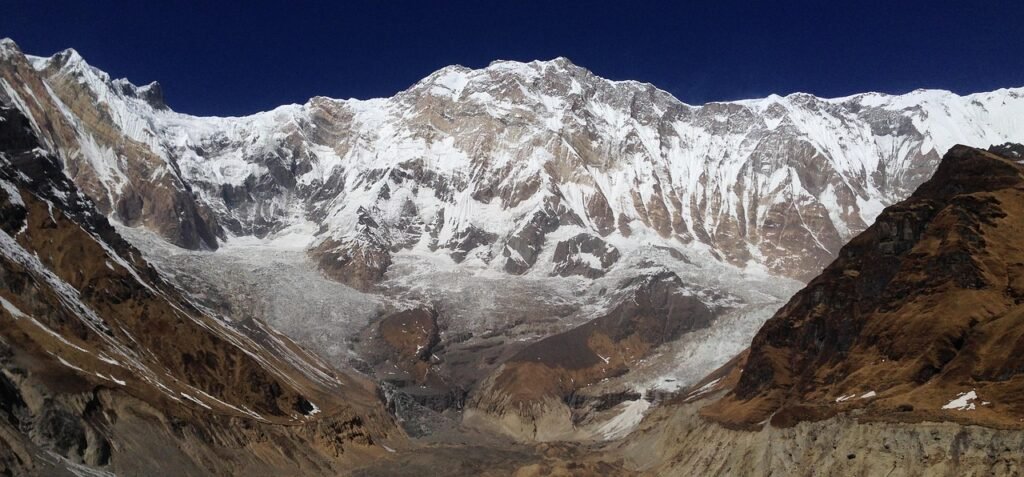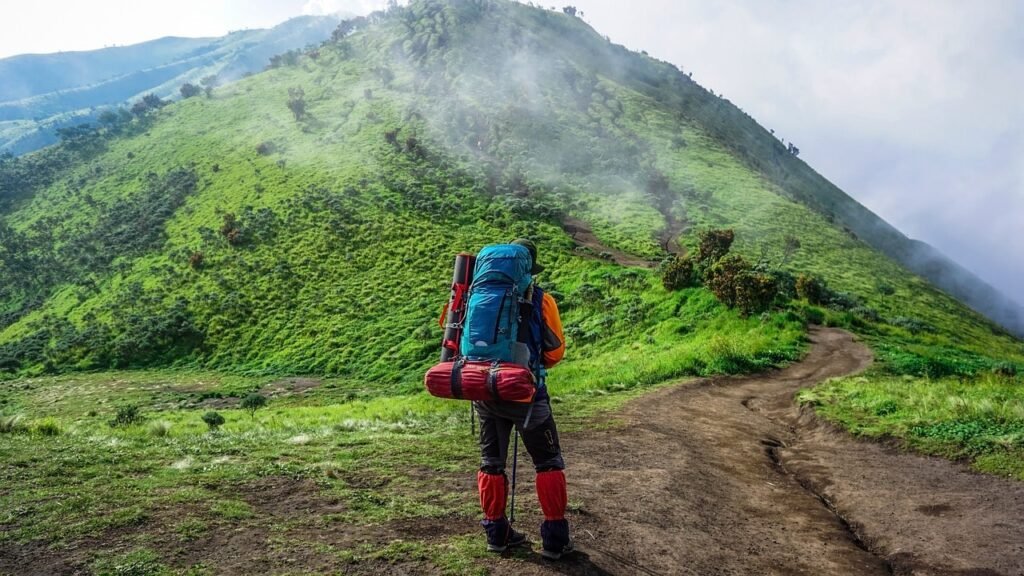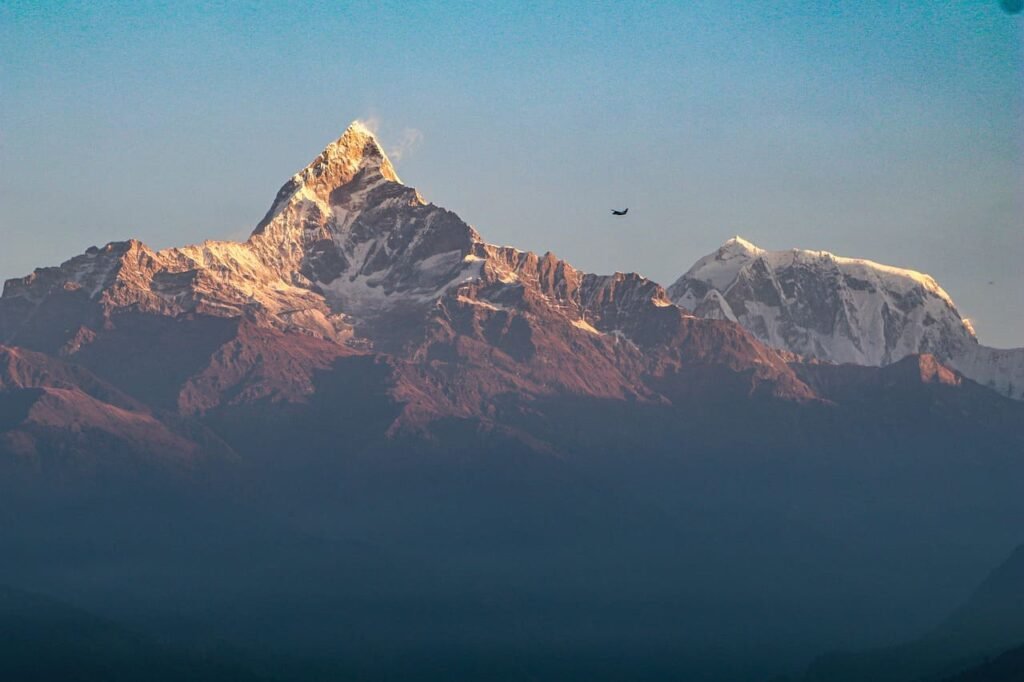The Annapurna Base Camp (ABC) trek is perhaps one of the most legendary and stunning experiences of the Himalayas. At 4,130 meters above sea level, the trek winds through rice fields terraces, lush rhododendron forests, and picturesque Gurung villages before bringing one finally to the grandeur of the Annapurna range’s mighty peaks. But perhaps one of the most asked questions among trekkers who are about to take their ABC journey is: When is the best time to trek to Annapurna Base Camp?
The answer lies in your preference, priorities, and tolerance for the weather. Each season of the year in Nepal offers a unique experience along the ABC trek from vibrant spring blooms to serene snow-covered trails during winter. In this blog, we uncover the best seasons to undertake the Annapurna Base Camp trek and what is in store for you during each season.
Spring (March to May)
Spring is most often seen as one of the best seasons to hike to Annapurna Base Camp. Winter will begin to melt, and trails will start to come alive. The warm sunny days, clear blue skies, and excellent visibility of the white peak tops are the bounties of spring. The forest trails become especially enchanting when rhododendrons burst into vibrant beauty, adding splashes of red, pink, and white hues to the trail.
Spring trekkers enjoy comfortable temperatures that facilitate trekking. The days are long, offering flexibility in trekking timetables and sufficient time to enjoy the scenery. However, with its popularity, the spring season is busy on the treks as well as the tea houses. If you enjoy meeting fellow travelers and trekking in ideal weather, this is certainly your season.
Spring Temperature Overview
| Location | Daytime Temperature | Nighttime Temperature |
|---|---|---|
| Pokhara (Start Point) | 20–30°C | 12–18°C |
| Ghorepani (Mid Trail) | 10–20°C | 5–10°C |
| Base Camp | 0–10°C | -5 to 0°C |
Autumn (Mid-September to November)
Autumn is another top-rated season for trekking in the Annapurna region. After the heavy monsoon rains, the air becomes fresh and clean, offering some of the clearest views of the Himalayan range you’ll ever see. The landscape is washed and vibrant, the skies are deep blue, and the peaks shine with exceptional clarity.

This season also overlaps with Nepal’s biggest festivals Dashain and Tihar giving trekkers a unique experience of local culture at its best. The weather is stable during autumn, with clear mornings and evenings and sunny days suitable for trekking. Like in spring, autumn too is a time when large groups of trekkers come, so it would be wise to reserve your accommodations and guides beforehand. For many, autumn provides the ideal mix of scenery, weather, and culture.
Autumn Temperature Overview
| Location | Daytime Temperature | Nighttime Temperature |
|---|---|---|
| Pokhara | 18–28°C | 10–15°C |
| Ghorepani | 8–18°C | 3–8°C |
| Base Camp | -2 to 8°C | -8 to -2°C |
Monsoon/Summer (June to Mid-September)
Trekking during the monsoon season is not in vogue but far from impossible. During June to early September, the Annapurna region is hammered by heavy rains from the monsoon winds blowing from the Indian Ocean. The result is thick green cover, thunderous waterfalls, and veil-like mist on the hills. This is when the entire region is alive and exhaling.

With beauty comes challenge. Trails are muddy and slippery, landslides are a problem in certain areas, and leeches are abundant in forests. Cloud cover hides mountain vistas for days at a time. But for adventurous trekkers who don’t mind getting a little wet and want to avoid the crowds, monsoon can offer a peaceful and singular experience on otherwise busy trails. Also, lodging and transportation prices fall significantly during this off-season and so become even cheaper.
Winter Temperature Overview
| Location | Daytime Temperature | Nighttime Temperature |
|---|---|---|
| Pokhara | 25–32°C | 18–24°C |
| Ghorepani | 15–22°C | 10–15°C |
| Base Camp | 5–12°C | 0–5°C |
Winter (December to February)
For trekkers who desire a more peaceful and snowy experience, winter is the ideal option. The trails are secluded, and the scenery transforms into a winter wonderland during this period. Snow blankets the upper section of the trek, including even the base camp itself, drawing the scene with breathtaking vistas and serene surroundings.
All that aside, winter trekking requires more preparation. Night temperatures drop dramatically, and sections of the trail become dangerous to walk in certain areas, due to snowfall. Daylight is less, so the planning time for each day’s hike is more important. As fewer tea houses are operational in higher altitudes, those that do open tend to be friendly and offer a tranquil chance to enjoy the mountains virtually on one’s own. If you are an experienced trekker or well-acclimatized to cold, then winter is a richly rewarding and unique ABC experience.
Winter Temperature Overview
| Location | Daytime Temperature | Nighttime Temperature |
|---|---|---|
| Pokhara | 12–20°C | 5–10°C |
| Ghorepani | 5–12°C | -2 to 3°C |
| Base Camp | -5 to 5°C | -10 to -5°C |
Choosing the Best Time Based on Your Trekking Desire
Finally, it all comes down to whether you want a warm weather, flower-blooming, or simply sunny weather trek when planning the best time to trek to Annapurna Base Camp. If warm weather and flowers are what you seek, spring (March to May) is your go-to outdoor activity season. For sunny skies, colorful festivals, and dry paths, autumn (mid-September to November) is the safest bet.

But if you’re the kind of person who loves solitude, is introverted enough not to be depressed by deadlines, and loves everything green, then monsoon (June to September) will delight you with its serene beauty. And if your soul yearns for white snowy mountains and lonely trails, winter (December to February) will not disappoint you, provided you’re fully dressed for the cold.
Read Related Blogs
Annapurna Base Camp Trek Cost for Nepali